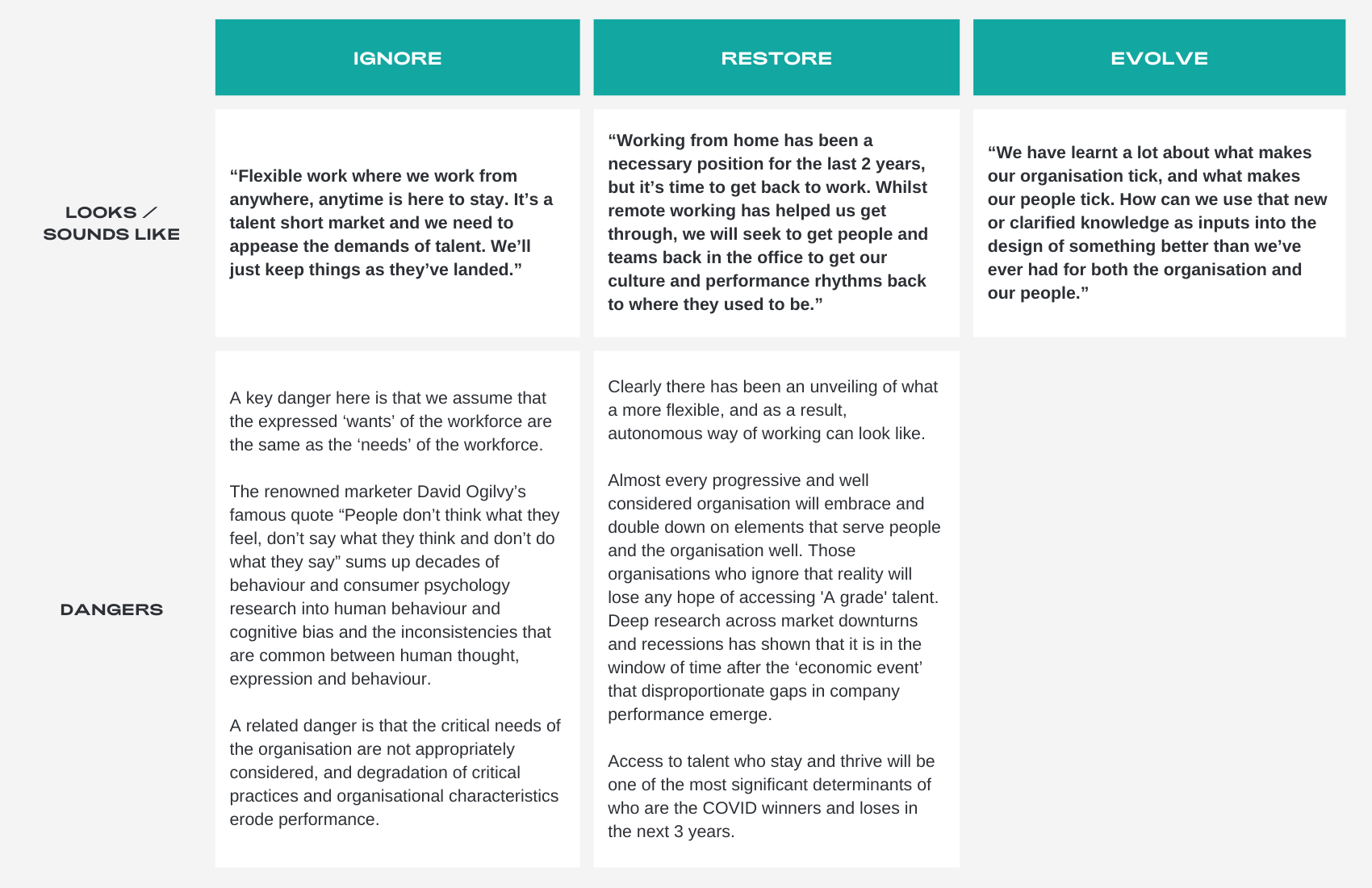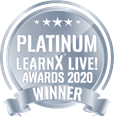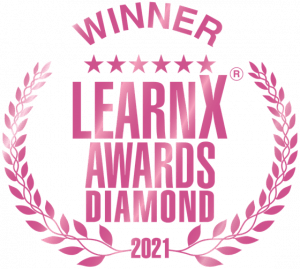IGNORE, RESTORE OR EVOLVE? THE NEW WORKPLACE DILEMMA
April 27, 2022
NOW IS THE TIME FOR ORGANISATIONS TO MAKE SOME CRUCIAL DECISIONS.
Ignore, Restore or Evolve? That appears to be dilemma faced by many organisations trying to navigate critical talent, culture and workforce issues ‘post pandemic’. With the inertia caused by lockdowns and health regulations quickly evaporating over the past few months, it is being replaced by frenetic organisational activity focussed on transforming or getting organisations ‘back on track’.
This reality poses a culture, talent and workforce dilemma for organisations in their response to this rapidly changing context:
- Do we Ignore these changes and just retain the default work practices that have set in across the past two years
- Do we seek to ‘turn back the clock’ and Restore pre pandemic work patterns and expectations, or;
- Do we actively seek to Evolve our culture and ways of working.
Our work across multiple government and large corporates across Australia has seen a range of responses that fall into these 3 categories.
WHERE TO FROM HERE
The opportunity now, regardless of the twists COVID may still present over the coming year, is to make a deliberate effort to explore what ‘Evolve’ might look like for your organisation. Our ‘Return to the Office
Playbook’ provides insights into how you might start that journey.








